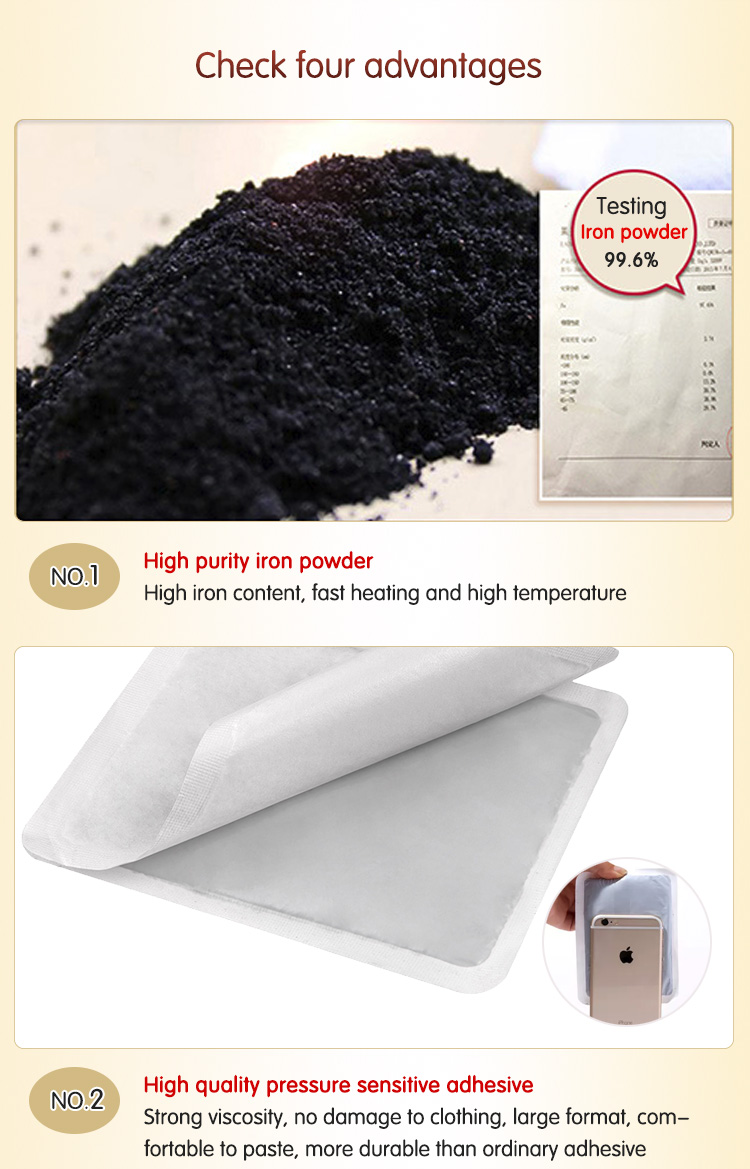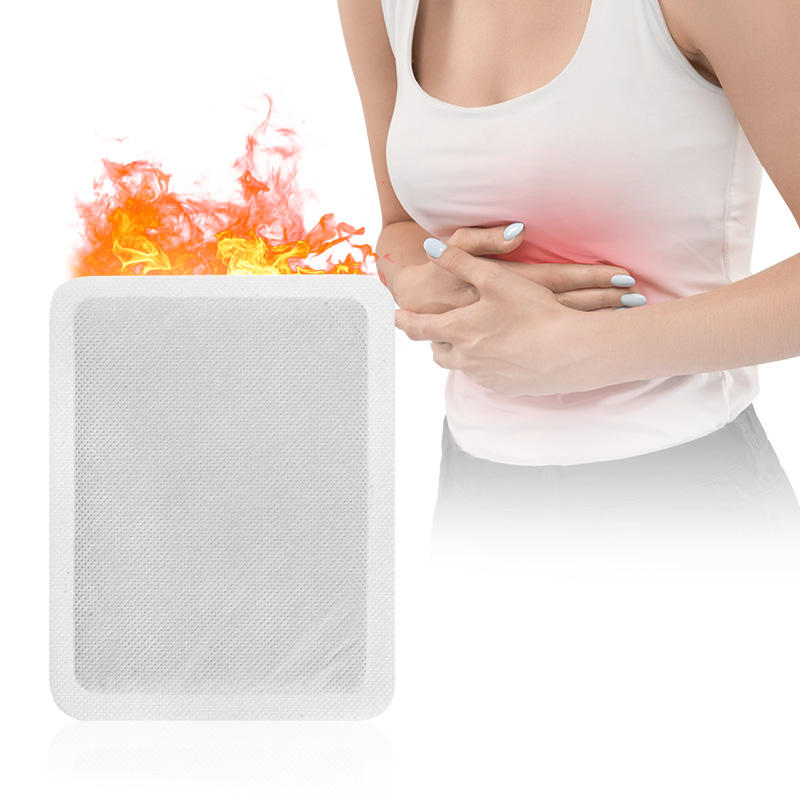How Do Menstrual Heat Pads Maintain a Safe Temperature?
Menstrual heat pads are an increasingly popular solution for menstrual discomfort, providing gentle warmth to alleviate cramps and discomfort. With a growing demand for safe and effective products, Menstrual Heat Pad Manufacturers and Menstrual Heat Pad OEMs are prioritizing technologies that ensure both efficacy and safety. This article explores the mechanisms and materials used to maintain a safe temperature in menstrual heat pads, offering insights for brands looking to partner with a Menstrual Heat Pad Supplier to create Custom Menstrual Heat Pads or Private Label Menstrual Heat Pads.

1. Why Temperature Regulation is Important in Menstrual Heat Pads
Temperature regulation is critical in menstrual heat pads as excessive heat can lead to skin irritation or burns, while inadequate heat may render the product ineffective. Users expect safe, sustained warmth that targets menstrual pain without causing harm. As such, Menstrual Heat Pad Manufacturers implement specific materials, heating mechanisms, and control systems to achieve optimal temperature levels, typically ranging between 104°F (40°C) and 122°F (50°C).
Safe temperature maintenance has the following benefits:
- Enhanced User Comfort: Gentle and consistent heat provides comfort without the risk of overheating.
- Reduced Risk of Skin Damage: Proper temperature control ensures safe use over extended periods.
- Efficient Pain Relief: Targeted heat application helps relax muscles and alleviate cramps effectively.
2. Types of Heating Mechanisms in Menstrual Heat Pads
There are several types of heating mechanisms used by Menstrual Heat Pad OEMs. Each has specific features that influence the pad's effectiveness, safety, and manufacturing complexity.
A. Air-Activated Heating Mechanism
One of the most common methods used in Custom Menstrual Heat Pads is air-activated heating, which relies on an exothermic chemical reaction. These pads contain materials like iron powder, salt, and activated charcoal. When exposed to air, these ingredients react, gradually generating heat over several hours.
- Temperature Regulation: The materials are precisely measured to ensure the reaction produces a steady temperature within the safe range. Menstrual Heat Pad Manufacturers conduct rigorous testing to calibrate these mixtures.
- Pros and Cons: Air-activated heat pads are single-use, which makes them convenient but less environmentally friendly. However, they are safe due to the naturally self-regulating reaction that doesn’t exceed safe temperatures.
B. Battery-Operated Heating Pads
Battery-operated heating pads incorporate electrical components that allow users to control temperature levels manually. These Custom Menstrual Heat Pads typically feature adjustable settings, allowing users to set their desired level of warmth.
- Temperature Control: Battery-operated pads often include built-in temperature sensors or thermostats to prevent overheating. They automatically shut off when they reach a certain temperature, making them safe and user-friendly.
- Pros and Cons: While more expensive than disposable pads, battery-operated menstrual heat pads are reusable and eco-friendly. However, they may require more maintenance and pose safety risks if damaged or improperly manufactured.
C. Phase Change Material (PCM) Heating
Some Menstrual Heat Pad Suppliers use phase change materials, which absorb and release heat at specific temperatures. When heated, PCMs change from solid to liquid, storing energy that is gradually released as the material returns to its solid state.
- Temperature Regulation: PCMs are engineered to maintain consistent warmth, typically between 104°F and 113°F, making them an excellent choice for safe, sustained heat.
- Pros and Cons: PCM heat pads are reusable, efficient, and provide consistent heat. However, they may have limited heat duration, making them less suitable for users needing prolonged relief.
3. Essential Safety Features in Menstrual Heat Pads
To ensure that heat pads are safe, Menstrual Heat Pad OEMs incorporate several safety mechanisms, including temperature-limiting devices, automatic shut-off functions, and heat-diffusing materials.
A. Temperature-Limiting Controls
For Private Label Menstrual Heat Pads with electrical components, temperature-limiting controls are vital. These mechanisms monitor the pad’s temperature, ensuring it doesn’t exceed a safe level.
- Thermostatic Controls: Thermostats in battery-operated pads automatically turn off the heating element once a specific temperature is reached. This prevents overheating and ensures user safety.
- Self-Regulating Heating Elements: Some Menstrual Heat Pad Manufacturers use materials that naturally regulate temperature by adjusting resistance as they heat up, making them safer without requiring complex sensors.
B. Heat-Diffusing Layers
Manufacturers often incorporate heat-diffusing layers into the design of Custom Menstrual Heat Pads to distribute warmth evenly and prevent hotspots. These layers are made from materials like soft fabrics or breathable polymers that help reduce the risk of burns.
- Benefits of Heat Diffusion: Even distribution of heat makes the pad more comfortable and effective, reducing the risk of localized overheating that can cause discomfort or skin irritation.
- Material Choice: Choosing the right materials for heat diffusion is critical. For instance, Menstrual Heat Pad Suppliers often use fabric that is skin-friendly and non-reactive, adding to the product's overall safety.
C. Automatic Shut-Off
Automatic shut-off is an essential safety feature in battery-operated menstrual heat pads. This feature stops the heating element after a set time, typically between 15 and 60 minutes, depending on the product design.
- Safety Assurance: This feature prevents users from accidentally leaving the heat pad on for prolonged periods, thus preventing overheating and saving battery life.
- User-Friendly Design: Automatic shut-off increases the product's appeal by making it safer and more convenient, especially for those using it overnight or during sleep.
4. Materials Used in Safe Menstrual Heat Pads
Material selection is another critical factor in temperature regulation and safety for Menstrual Heat Pad Manufacturers. Materials must be skin-friendly, heat-resistant, and capable of safely containing heating elements.
A. Soft Fabric Linings
Fabric linings are commonly used to ensure comfort and insulation. Fabrics like cotton, fleece, or hypoallergenic synthetic blends are typically chosen to provide a soft, comfortable barrier between the skin and the heating element.
- Insulation: Soft fabric provides insulation, allowing heat to be directed towards the body while protecting the heating mechanism.
- Comfort and Safety: Comfortable materials reduce the risk of skin irritation, ensuring safe, prolonged use.
B. Non-Toxic Chemicals
Air-activated heat pads often use non-toxic materials for their chemical reactions. Menstrual Heat Pad Suppliers select safe, inert materials that are non-flammable and meet health standards for skin contact.
- Compliance: Manufacturers must comply with safety regulations to ensure all materials are safe for prolonged contact with sensitive skin.
- Certification Standards: Regulatory standards like ISO 10993 for biocompatibility testing are often required, ensuring the materials do not cause skin reactions.
5. Standards and Regulations for Safe Temperature Control
Temperature control is closely monitored through various quality control standards. Menstrual Heat Pad OEMs follow strict guidelines to ensure their products meet international safety standards, which makes their products trustworthy for consumers and businesses alike.
- ISO 9001 for Quality Management: This standard ensures that manufacturers adhere to quality control protocols, producing consistent and reliable products.
- FDA Regulations: For Menstrual Heat Pad Suppliers targeting the U.S. market, FDA approval is essential. This includes ensuring that any heating components meet safety regulations.
- CE Marking: For distribution within the European Union, CE marking verifies that the product complies with health, safety, and environmental protection standards.
Frequently Asked Questions
1. Can I adjust the temperature on a menstrual heat pad?
Most battery-operated menstrual heat pads come with adjustable temperature settings, allowing users to control the warmth according to personal preference.
2. Are air-activated menstrual heat pads safe for prolonged use?
Yes, they are generally safe for prolonged use, as they self-regulate to maintain a safe temperature. However, it’s recommended to follow the manufacturer’s instructions for best results.
3. How do I know if a menstrual heat pad is FDA approved?
Look for FDA approval labeling on the packaging or consult the Menstrual Heat Pad Manufacturer's product information. Manufacturers must meet strict standards to receive FDA clearance.
4. Can custom menstrual heat pads maintain consistent heat?
Yes, Custom Menstrual Heat Pads with quality heating mechanisms, such as phase change materials or battery-operated elements, can maintain consistent heat effectively.
5. Is there a risk of burns with menstrual heat pads?
Properly designed menstrual heat pads with temperature controls pose minimal burn risk. However, users should follow safety instructions to prevent misuse.
6. What should I look for when selecting a Menstrual Heat Pad Supplier?
Choose a supplier with certifications like ISO 9001 and compliance with FDA or CE standards, which indicate adherence to high safety and quality protocols.
Through these advanced technologies and rigorous safety standards, Menstrual Heat Pad Manufacturers and Menstrual Heat Pad OEMs can provide safe and effective menstrual heat pads that deliver consistent warmth and comfort. Whether for a Custom Menstrual Heat Pad or a Private Label Menstrual Heat Pad, understanding the mechanisms behind safe temperature control is essential for creating a reliable and trustworthy product.






